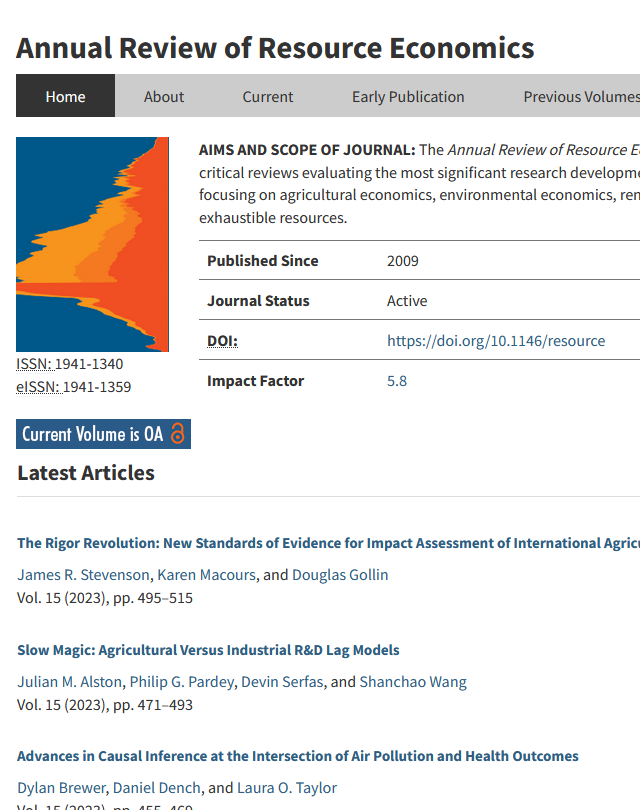美国的粮食不安全:测量、经济模型和粮食援助的有效性
IF 8.4
2区 经济学
Q1 AGRICULTURAL ECONOMICS & POLICY
Annual Review of Resource Economics
Pub Date : 2023-06-12
DOI:10.1146/annurev-resource-101422-090409
引用次数: 3
摘要
我们首先讨论美国食品安全模块的起源和发展。然后,我们提出了粮食不安全的概念模型,借鉴消费者选择理论。该模型显示了粮食不安全如何表现出质量与数量之间的权衡关系,并与政策杠杆存在关联。接下来,我们为那些报告粮食不安全的人与那些没有报告粮食不安全的人提供有关粮食消费的新风格化事实。在整个膳食质量分布中,生活在粮食不安全家庭的成年人所食用的膳食质量较低,热量摄入的波动性更大。在粮食不安全家庭中,20岁以下的男性在饮食质量上没有差异,但摄入的卡路里较少,而年轻女性则相反。我们回顾了有关联邦食品援助计划对食品不安全影响的文献。补充营养援助计划倾向于减少家庭粮食不安全,而对营养质量几乎没有影响。与儿童有关的联邦计划(即学校食品计划和妇女、婴儿和儿童特别补充营养计划)倾向于减少粮食不安全,同时也提高儿童饮食的营养质量。《资源经济学年度评论》第15卷的最终在线出版日期预计为2023年10月。修订后的估计数请参阅http://www.annualreviews.org/page/journal/pubdates。本文章由计算机程序翻译,如有差异,请以英文原文为准。
Food Insecurity in the United States: Measurement, Economic Modeling, and Food Assistance Effectiveness
We first discuss the genesis and development of the Food Security Module in the United States. We then present a conceptual model of food insecurity, drawing on consumer choice theory. The model shows how food insecurity exhibits a quality–quantity trade-off and has linkages to policy levers. Next, we present new stylized facts pertaining to food consumption for those who report food insecurity versus those who do not. Adults residing in food-insecure households consume lower-quality diets across the entire distribution of diet quality and experience more volatility in caloric intake. Males younger than 20 years in food-insecure households exhibit no differences in diet quality but consume fewer calories, while the opposite is true for younger females. We review the literature pertaining to the effects of federal food assistance programs on food insecurity. The Supplemental Nutrition Assistance Program tends to reduce household food insecurity, while having little to no effect on nutritional quality. Federal programs pertaining to children (i.e., the school food programs and the Special Supplemental Nutrition Program for Women, Infants, and Children) tend to reduce food insecurity while also increasing the nutritional quality of children's diet. Expected final online publication date for the Annual Review of Resource Economics, Volume 15 is October 2023. Please see http://www.annualreviews.org/page/journal/pubdates for revised estimates.
求助全文
通过发布文献求助,成功后即可免费获取论文全文。
去求助
来源期刊

Annual Review of Resource Economics
AGRICULTURAL ECONOMICS & POLICY-
CiteScore
9.40
自引率
0.00%
发文量
34
期刊介绍:
The Annual Review of Resource Economics provides authoritative critical reviews evaluating the most significant research developments in resource economics, focusing on agricultural economics, environmental economics, renewable resources, and exhaustible resources.
 求助内容:
求助内容: 应助结果提醒方式:
应助结果提醒方式:


